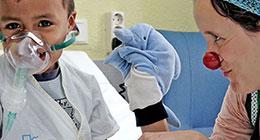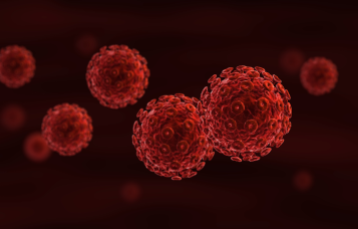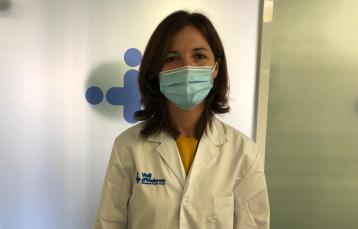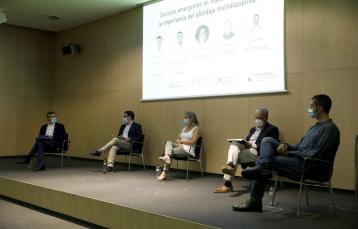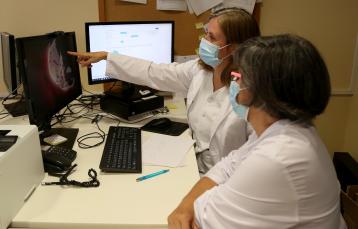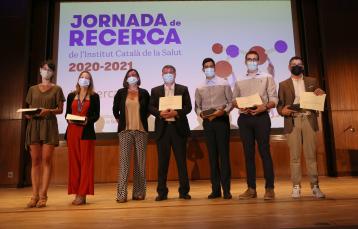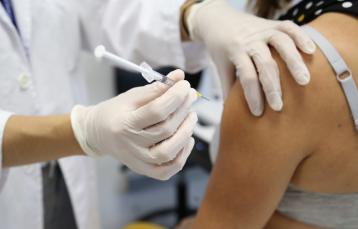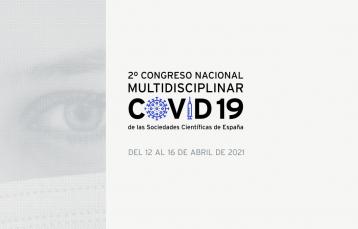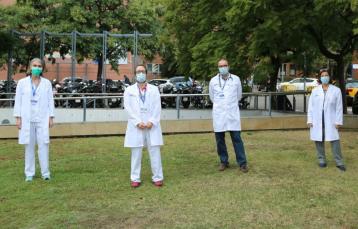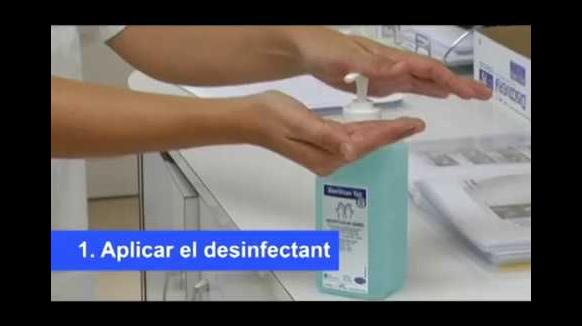Forty years ago, in October 1981, Vall d'Hebron University Hospital diagnosed the first case of AIDS in Spain. A 35 year-old man was admitted to hospital with a short history of persistent headache, purple lesions and Kaposi's sarcoma, which is a type of skin cancer caused by a herpes virus (HHV-8). This disease, which occurs when the immune system is weakened, became associated with HIV shortly after. The patient had lost a lot of weight in the six months prior to hospitalisation. Once admitted to hospital, the headaches became more common and part of the patient’s body became paralysed. To work out what the problem was, the patient underwent a scan. Once the results were ready, the medical team identified a three-centimetre tumour in the patient's brain which they interpreted as a metastasis. He underwent emergency surgery, but the patient sadly lost his life four days later.
Dr Carmen Navarro, who is now retired but was then head of the Neuropathology Department at Vall d’Hebron University Hospital, was in charge of analysing the tumour and carrying out the neurological autopsy. “Instead of tumour cells, I identified parasitic cells that I associated with a toxoplasmosis”, she explained. “The microscopic examination confirmed that the patient had toxoplasma granuloma. This was a surprising discovery, because it was an infection that was only found in new-born babies”, she added.
This was the first case of HIV diagnosed in Spain, but it was also the first time that toxoplasma infection of the brain was associated with AIDS. “In the article published by the Vall d’Hebron team in the Lancet, we associated Kaposi’s sarcoma and other opportunistic infections recently observed in the homosexual community in the USA, particularly in California and New York, with our case. This was decisive in diagnosing future patients with AIDS”, she added. The article also stated that the patient, despite having a stable partner at the time he contracted the infection, had engaged in sexual relations during a trip to New York in 1974 and to Turkey in 1980. Just like with Covid-19 and other infectious diseases, contact tracing helped to clarify the diagnosis.
By that time, the condition had not yet been given the name Acquired Immunodeficiency Syndrome (AIDS). It would be another two years until in 1983 the French virologist Luc Montagnier of the Pasteur Institute in Paris, who would later go on to win the Nobel Prize for Medicine in 2008, managed to isolate and identify the virus that was wreaking havoc among the homosexual population in particular.
“The first cases were detected in men who had sex with other men, but it didn’t take long for the disease to appear in patients suffering from haemophilia or drug addictions; and this wasn’t only in the male population, but in women and children too”, recalled Dr Magda Campins. The current director of the Epidemiology and Public Health Research Group of the Vall d'Hebron Research Institute (VHIR) started working at Vall d’Hebron 37 years ago. “Each time that a case was diagnosed, we performed contact tracing. Those were times when HIV was a stigmatised disease, and communicating this to contacts and family members was very tough. It wasn’t an easy time for healthcare workers either, as at that time we didn't know how it was transmitted. Homophobic attitudes in society and the early association of the disease with the homosexual community stigmatised patients, while mis-information and the lack of scientific response did not help to curb social rejection”, recalls Dr Magda Campins. Despite the fact that the life expectancy of HIV patients has now greatly improved, she still urges the use of protective measures to curb transmission. There are 150,000 AIDS patients in Spain, with 3,000 new infections being diagnosed every year.
Dr Carme Navarro, despite not going on to work in the field of HIV, remembers those years as being “terrible”. “From the first case onwards, the trickle of cases combining opportunistic infections was constant. These people were dying and there wasn't much that we could do. We quickly became aware of the arrival of a new disease that started out affecting the gay population, but which would eventually become a full-scale pandemic”, she added. Over the last 40 years, AIDS has taken the lives of more than 35 million people. Nowadays, 38 million people are living with the disease worldwide and 1.5 million people are affected by it every year. Despite being researched for more than four decades, a cure is yet to be discovered for the disease. “A vaccine has not been found because the AIDS virus, when it replicates in cells, has a great ability to create mutations. Just to give you an idea, it mutates up to 6,000 times more than a standard flu virus. This makes it much harder to find an effective vaccine", explained Dr María José Buzón, head of the HIV Translational Research Line in the Infectious Diseases Research Group at the VHIR. Thanks to the treatment available, HIV is now a chronic disease. Despite these developments, 690,000 people still die every year in low-to-medium income countries.
“Until AZT, the first antiretroviral drug that prevents the virus from replicating, came along in 1987, we weren't able to do much for patients. Even though it looked like AZT would improve their survival rate, this first family of antiretrovirals was highly toxic. It wasn't until 1996 that the history and prognosis of HIV would change, with the arrival of a three-drug cocktail that would greatly decrease the mortality rate”, explained Dr Vicenç Falcó, director of the Infectious Diseases Department of Vall d'Hebron University Hospital and researcher in the Infectious Diseases Research Group at the VHIR. For the following ten years, the treatment worked with certain drawbacks: many pills had to be taken, the treatment remained highly toxic and it interacted with other drugs. More efficient and less toxic treatments became available in 2005. The real qualitative leap, however, arrived between 2012 and 2015. “A new family of drugs arrived that solved these three main problems: they had low toxicity, were easy to take and did not interact with other drugs”, he summarised. “We are now faced with a chronic disease in which affected people have a similar life expectancy to the rest of the population”, he added. Despite this, some challenges remain unresolved. The first challenge is to find a cure for AIDS. The second is to diagnose the disease in people who do not know that they are infected. The third is to prevent the spread of the disease. There are preventive drugs (PrEPs, or pre-exposure prophylaxis drugs) which can prevent infection, with antiretroviral molecules being administered to people who are likely to become infected. However, these treatments are not accessible to people in developing countries. The Drassanes Express programme, located in the Drassanes Primary Care Centre (CAP), serves to detect and treat the infection and reduce the incidence rate. The final challenge will be to keep caring for people as they get older. In the West, 50% of infected people are older than 50.
There are currently two main research lines in our efforts to find a cure for AIDS: to develop a preventive vaccine, and to find new treatment strategies that will allow us to eliminate the virus from our society. “All of this knowledge has helped us to rapidly develop a vaccine and strategies to halt the spread of Covid-19, and we now hope to reap the rewards of this”, said Dr Maria José Buzón. Alongside Dr Meritxell Genescà, researcher in the Infectious Diseases Research Group at the VHIR, she is leading the various VHIR research lines which are based on a “shock and kill” strategy. Put simply, this involves reactivating the latent virus and attacking it. “The AIDS virus is very clever because it hides in a latent state in reservoirs, which allows it to evade antiretroviral treatments and the body’s immune system. The infected person runs the risk of these reservoirs becoming activated with an infection such as a cold, which could lead to the virus being replicated by the millions. For this reason, we will never be able to leave behind antiretroviral treatments”, explained Dr Maria José Buzón.
Various strategies are currently being studied in the laboratory. One is to activate the virus with lauric acid, a harmless compound, which will make the immune system identify and attack the invading agent. Other strategies include boosting natural killer (NK) cells with bispecific antibodies that also recognise the infected cells; and designing a nanoparticle to target lymph nodes - one of the reservoirs where viruses accumulate - to deliver drugs that are capable of reactivating latent HIV viruses.









